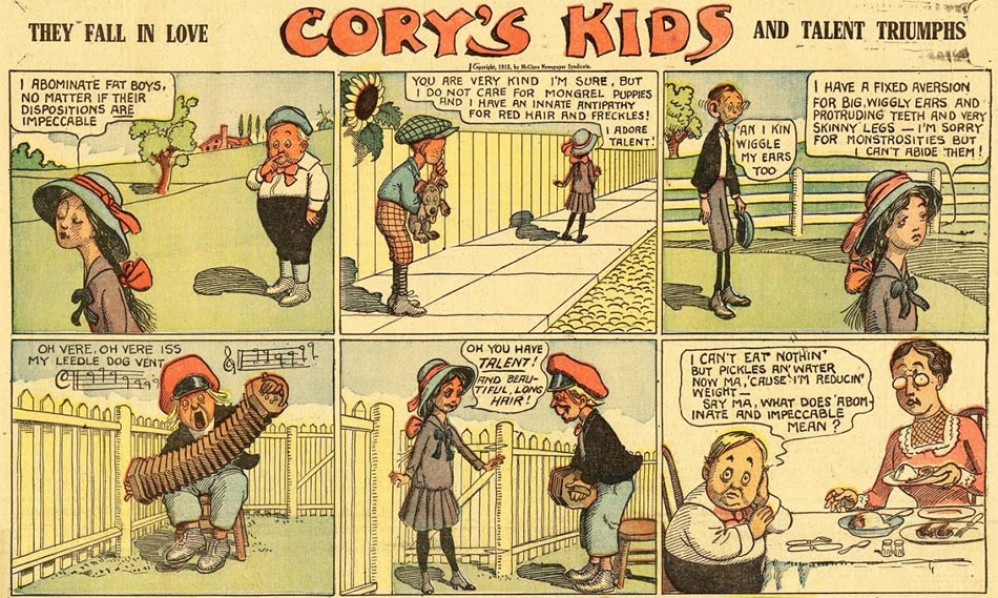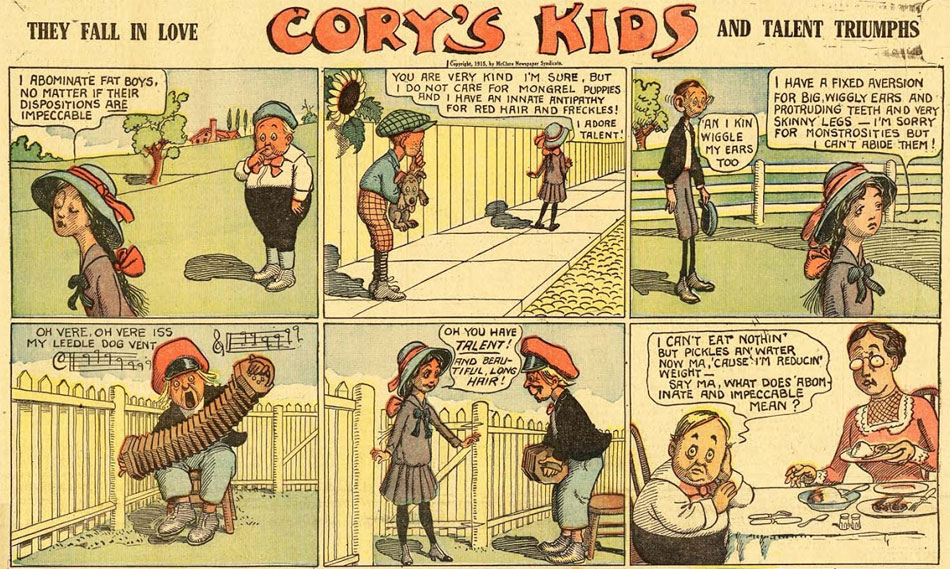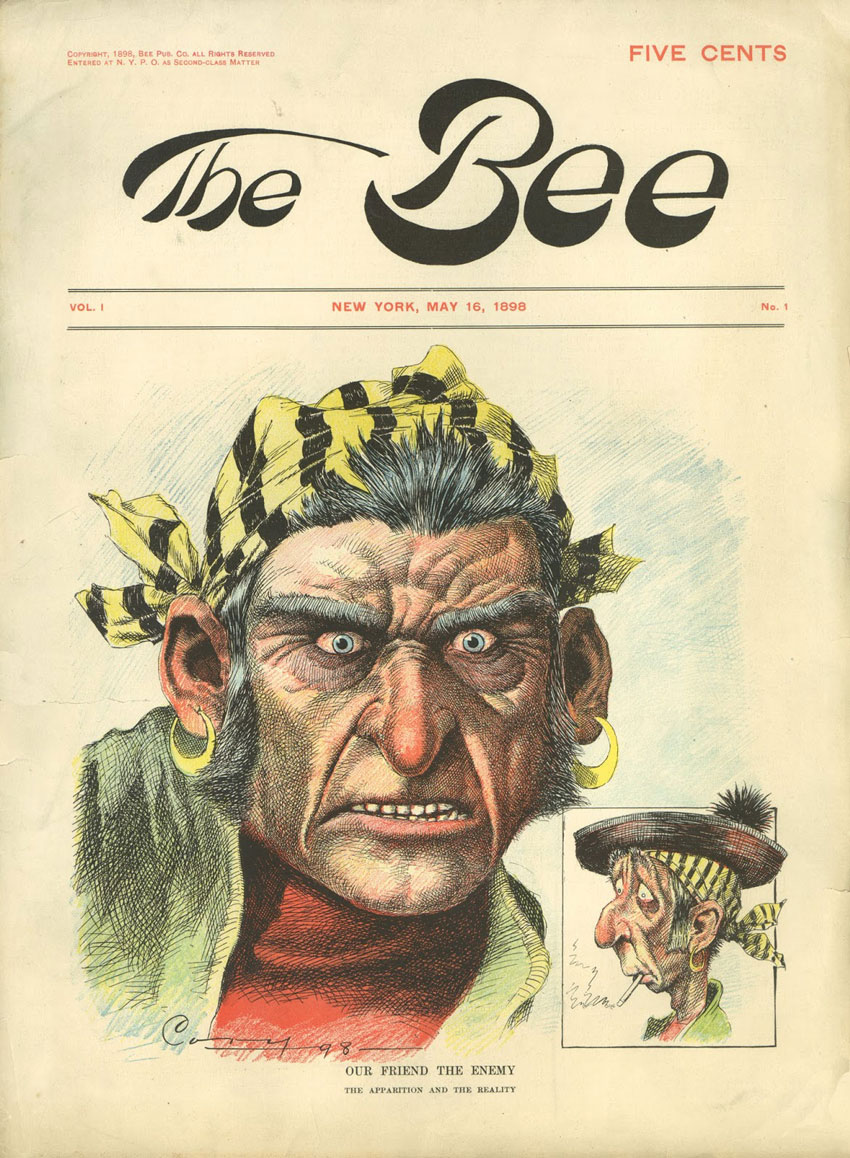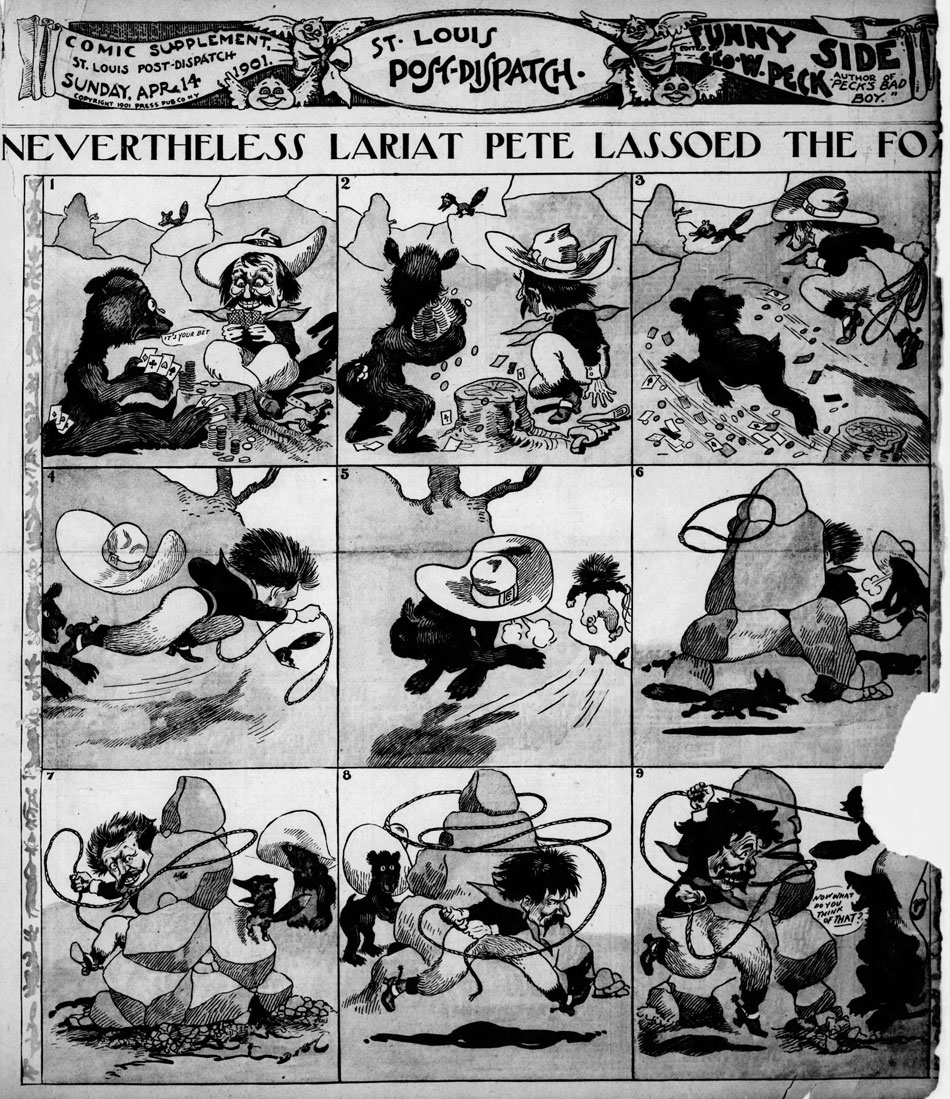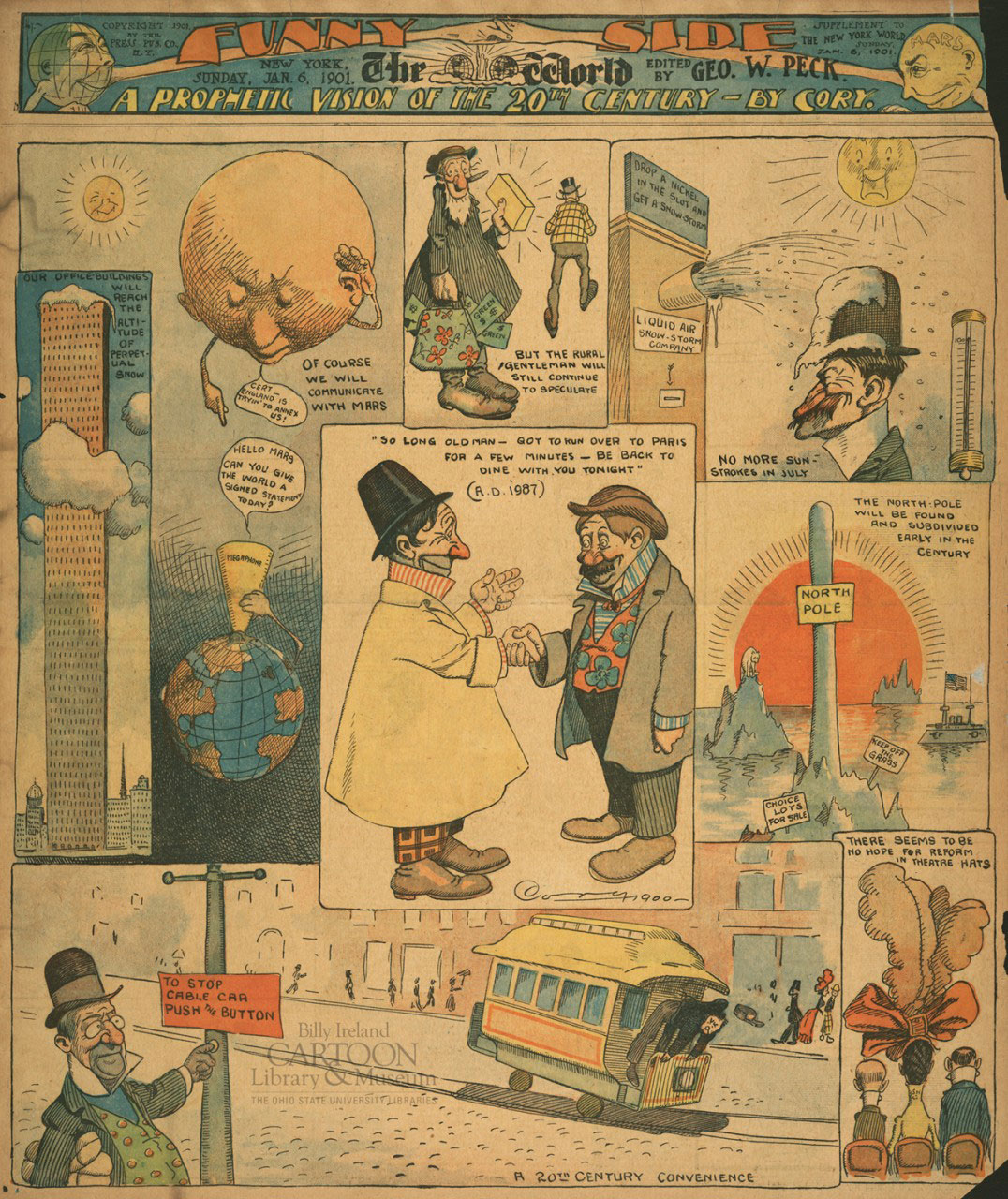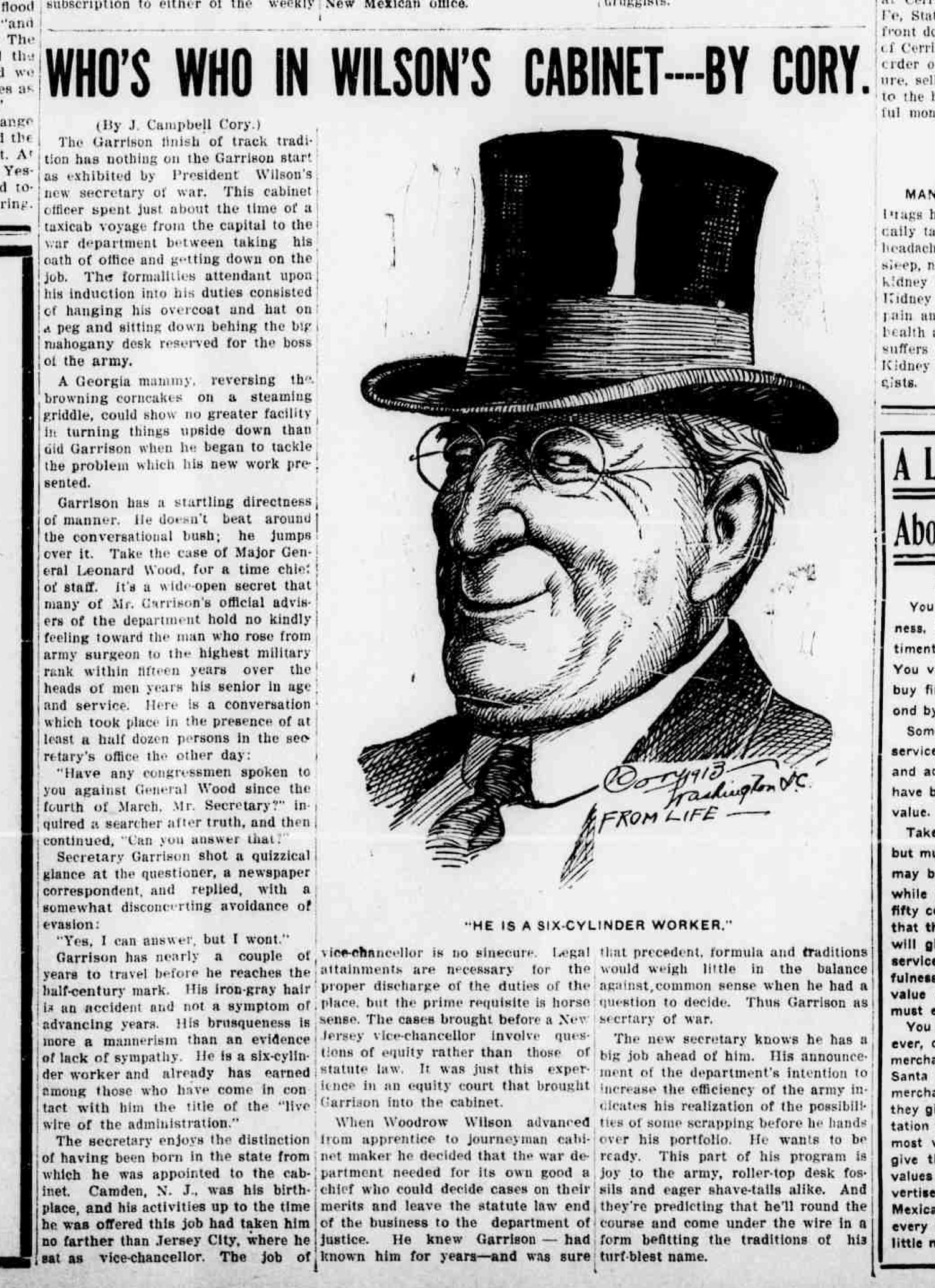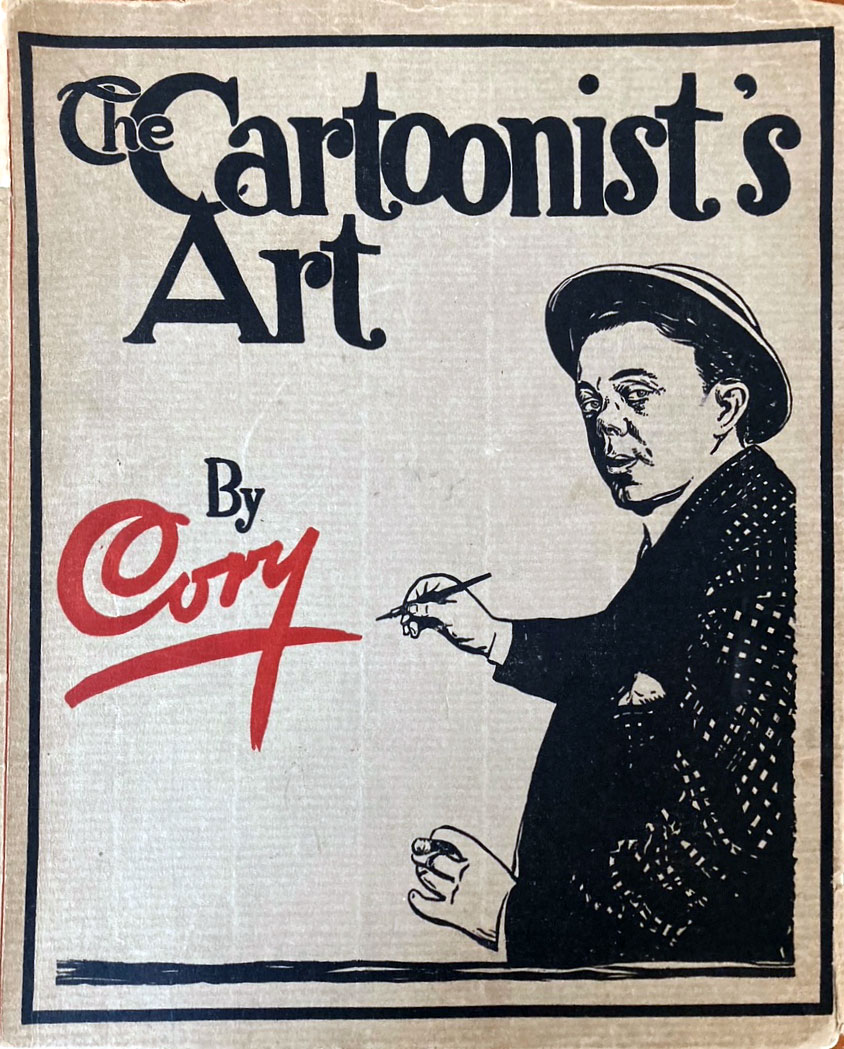John Campbell Cory was a late 19th-century, early 20th-century American political cartoonist and illustrator, notable for his lavish, detailed graphic style. Throughout his busy career, he was house cartoonist for several newspapers, but rarely held on to his job for long. On two occasions, he tried to establish his own illustrated magazine, namely The Bee (1898) and The Great West (1908), but both were short-lived. Cory additionally published the instructional guide 'The Cartoonist's Art', (1912) and, together with Perce Pearce, established the Denver Academy of Applied Art. A genuine adventurer, Cory was also active in the mining industry, and had some short excursions in the world of comics. For The New York Journal, he drew the single-panel cartoon feature 'Funny Side of Life in Montana' (1898) and the western comic 'Lariat Pete' (1900-1902). In 1917, he was a ghost artist for the daily spin-off of 'The Katzenjammer Kids'. Cory's most memorable comic series was 'Cory's Kids' (1915-1916), a tragicomical children's comic distributed to Sunday newspapers by the McClure Syndicate.
Early life and career
John Campbell Cory (also referred to as Jack Cory) was born in 1867 in Waukegan, Illinois as one of six children in the family of Benjamin Sayre Cory, Jr. and Jessie S. MacDougal Cory. His younger sister, Fanny Young Cory (1877-1972), and their Canadian-American cousin, Benjamin Sayre Cory Kilvert (1879-1946), later became notable cartoonists in their own right. Another famous relative was Kate Cory (1861-1958), who worked as a fine artist and photographer. In 1881, the 14-year old John Campbell Cory became an assistant of an architect in Chicago, moving to New York within a year to do the same job. Between 1884 and 1886, he went for a more rural path, working on a farm in Indianapolis, Indiana. In his spare time, he drew barnyard animals, taking a specific interest in horses.
The New York Journal
From 1887 on, Cory's animal-themed illustrations appeared in the Indianapolis magazine Western Horseman and additional livestock and turf periodicals. By 1889, the artist moved to Chicago, where he took his start in the newspaper industry and got married a year later. In 1897, Cory's knowledge of horses landed him a job in the sports department of William Randolph Hearst's The New York Journal, where he wrote and illustrated articles about horse racing. Apart from sports cartoons, he also provided political cartoons. In 1897, Cory's cartoons also appeared on the humor page 'The Kaleidoscope' in the New York Evening Journal.
The Bee
In early 1898, Cory decided to launch his own weekly magazine. On 16 May, the first issue of The Bee rolled from the presses. His uncle, Charles Dickinson Cory, was the magazine's business manager, while Cory served as its managing editor and main cartoonist. Twelve issues came out in full color before The Bee buzzed out of existence on 2 August of that same year. Nevertheless, the magazine excelled in gorgeous illustration work and Cory gave it his all.
Pulitzer papers
After his failed attempt at founding his own magazine, Cory joined The New York World, a newspaper owned by Joseph Pulitzer, rival of Cory's previous publisher, William Randolph Hearst. Between the fall of 1897 and September 1902, he was their political cartoonist and occasionally also drew comics. On 30 December 1900, Cory drew the western comic Sunday page 'Lariat Pete', in collaboration with Daniel McCarthy. It ran until 6 September 1902, after which George Herriman took it over for an additional two months, before the feature concluded on 15 November of that year.
'Lariat Pete' (St. Louis Post-Dispatch, 14 April 1901).
Another feature by Cory was 'Funny Side of Life in Montana' (November-December 1898), a series of single-panel cartoons grouped together on one page, sharing a thematic connection. A particularly noteworthy cartoon ran on 6 January 1901, titled 'A Prophetic Vision of the 20th Century'. The gags were mostly silly predictions, like snow storms becoming available in nickel machines and women's hats in theaters growing so large that they obscure everybody's view. Yet one joke actually came true: "The North Pole will be found and subdivided early in the century." Indeed, in 1910, Robert Peary became the first man to set foot near the North Pole. From December 1900 on, Many of Cory's illustrations appeared in The New York World's Sunday supplement, the Sunday World's New Comic Weekly.
'A Prophetic Vision of the 20th Century' (1901).
Mixing cartooning with non-artistic excursions
During the early 20th century, J. Campbell Cory combined his cartooning career with a variety of other activities. In 1901, the New York School of Caricature was established, where Cory served as instructor and vice president. Between late 1902 and early 1905, Cory gave up his job at The New York World to move to Helena, Montana, where he spent his days mining, while living together with his father, brother, uncle and cousin. In 1903, Cory was President of the local Knickerbocker Development Company. On 19 June of that year, the Northwestern Exploration Company, with offices in Manhattan, was incorporated with 200,000 dollars worth of capital. J. Campbell Cory was one of its directors. He later also became President and general manager of Sun River Mining. Still, he didn't neglect his graphic talent. Between 1903 and 1905, Cory livened up the pages of Butte Miner magazine, where he met comic writer Berton Braley, with whom he collaborated later in his career. On 31 March 1906, he was granted a patent for a useful invention: “the golf ball marker”. This tool made it able to imprint one's name on the surface of a golfball, avoiding disputes over whose ball scored a point. The only downside was that the imprint couldn't be longer than five words.
In the Spring of 1905, Cory returned to the New York World, continuing his stint as political cartoonist for two years. In early 1907, he went on another adventure, leading an expedition throughout Vancouver, British Columbia, Canada, trying to seek profitable minerals. However, that same year an economic panic (the “Panic of 1907”) made his investors reconsider. Back in New York City, he again unsuccessfully tried to establish his own magazine, the monthly The Great West (1908). Starting June 1908, he spent 18 months working for The Cincinnati Times-Star as its editorial cartoonist. In November 1909, Cory made an amateur balloon flight, rising 635 miles in 10 hours, breaking various balloon flight records.
Between 1912 and 1914, he became cartoonist for the Scripps News Service and their magazines. He published an illustrated travel diary about a 1913 trip to Colon, Panama, serialized in the Tacoma Times. Although the text was credited to one “Uncle Dud”, this was actually a pseudonym for himself. His acquaintance Berton Braley also made the trip to Panama and on their return, the two men teamed up for an illustrated poetry newspaper feature. Cory also traveled to Washington to study U.S. President Woodrow Wilson's cabinet and serialized these caricatures under the title 'Who's Who in Wilson's Cabinet' in The Santa Fe New Mexican. Around this period, he also brought out an educational book, 'The Cartoonist's Art' (The Trumbo Co., Chicago, 1912), giving practical tips on how to draw cartoons. Eight years later, it received a reprint by The Prang Company in New York.
'Who's Who in Wilson's Cabinet' (The Santa Fe New Mexican, 29 March 1913).
Cory's Kids
In 1914, Cory's cartoons could be found in The Chicago Herald. Between 21 March 1915 and 6 February 1916, he drew the Sunday children's gag comic 'Cory's Kids' (1915-1916), distributed by the McClure Syndicate. It ran in the comic sections of The Dallas Morning News and The St. Louis Republic, among other papers. The series stood out for its very detailed, semi-realistic artwork, giving the children's everyday adventures a more recognizable atmosphere.
The Katzenjammer Kids
In The New York World, Cory also ghosted the popular gag comic 'The Katzenjammer Kids', originally created by Rudolph Dirks, but since 1914 continued by Harold Knerr. However, Cory didn't work on the regular Sunday comic page, but on the short-lived daily version, launched on 28 May 1917 as 'The Katzies', drawn by Knerr's assistant Oscar Hitt. When that same year the United States entered the First World War, the title was changed to 'The Shenanigan Kids' between 23 June 1918 and 11 April 1920, because of anti-German sentiment. The two prankster boys were now no longer German but Dutch. Sources contradict each other on when Cory ghosted these episodes. Comic historian John Adcock claims that Cory started on 10 September 1918.
Final years and death
By October 1918, John Campbell Cory had settled down in Denver and became house cartoonist for the Rocky Mountain News and the Denver Times for the rest of his life. Together with fellow cartoonist Perce Pearce, he established the Denver Academy of Applied Art, which taught commercial and fine arts. In 1925, Cory passed away in Denver, Colorado, at age 58.


